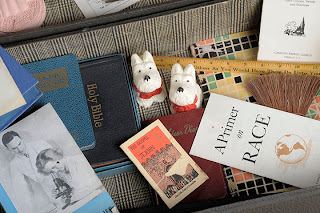by Charles Wright
2:23 p.m.
The season glides to a click.
Nobody says a word
From where I sit, shadows dark flags from nothing’s country,
Birds in the deep sky, then not,
Cricket caught in the outback between a grass spear and a leaf.
The quince bush
Is losing its leaves in the fall’s early chemotherapy,
And stick-stemmed spikes of the lemon tree
Spink in the sun.
Autumnal outtakes, autumnal stills…
Mockingbird, sing me a song.
Back here, where the windfall apples rot to the bee’s joy,
Where the peach sheaths and pear sheaths piebald and brindle,
Where each year the orchard unlearns
Everything it’s been taught
The weekend’s rainfall
Pools its untroubled waters,
Doves putter about in the still-green limbs of the trees.
Ants inch up the cinder blocks and lawn spiders swing from the vines.
You’ve got to learn to unlearn things, the saeason repeats.
For every change there’s a form.
----------
Open your mouth, you are lost, close your mouth, you are lost,
So the Buddhists say.
They also say,
Live in the world unattached to the dust of the world.
Not so easy to do when the thin, monotonous tick of the universe
Painfully pries our lips apart,
And dirties our tongues
With soiled, incessant music.
Not so easy to do when the right front tire blows out,
Or the phone rings at 3 a.m.
And the ghost-voice says, “It’s 911, please hold.”
They say, enter the blackness, the form of forms. They say,
No matter how we see ourselves, sleeping and dreaming see us as light.
Still, there’s another story,
That what’s inside us is what’s outside us:
That what we see outside ourselves we’ll soon see inside ourselves.
It’s visible, and is our garment.
Better, perhaps, to wear that.
Better to live as though we already lived the afterlife,
Unattached to our cape of starred flesh.
But Jesus said,
Lift up the stone and you will find me,
Break open a piece of wood, I’m there.
It’s hard to argue with that,
Hard to imagine a paradise beyond what the hand breaks.
____
For every force there’s a change.
Mouthful of silence, mouthful of air,
Sing me your tune.
The wind leaves nothing alone.
How many times can summer turn to fall in one’s life?
Well you might ask, my old friend,
Wind-rider, wind-spirit, seeking my blood out,
Humming my name.
Hard work, this business of solitude.
Hard work and no gain,
Mouthful of silence, mouthful of air.
Everything’s more than it seems back here. Everything’s less.
Like migrating birds, our own lives drift away from us.
How small they become in the blank sky, how colorful,
On their way to wherever they please.
We keep our eyes on the ground,
On the wasp and pinch bug,
As the years grind by and the seasons churn, north and south.
We keep our eyes on the dirt.
Under the limp fins of the lemon tree, we inhabit our absence.
Crows cross-hatch and settle in,
Red birds and dust sparrows
Spindle and dart through the undergrowth.
We don’t move. We watch, but we don’t move.










































